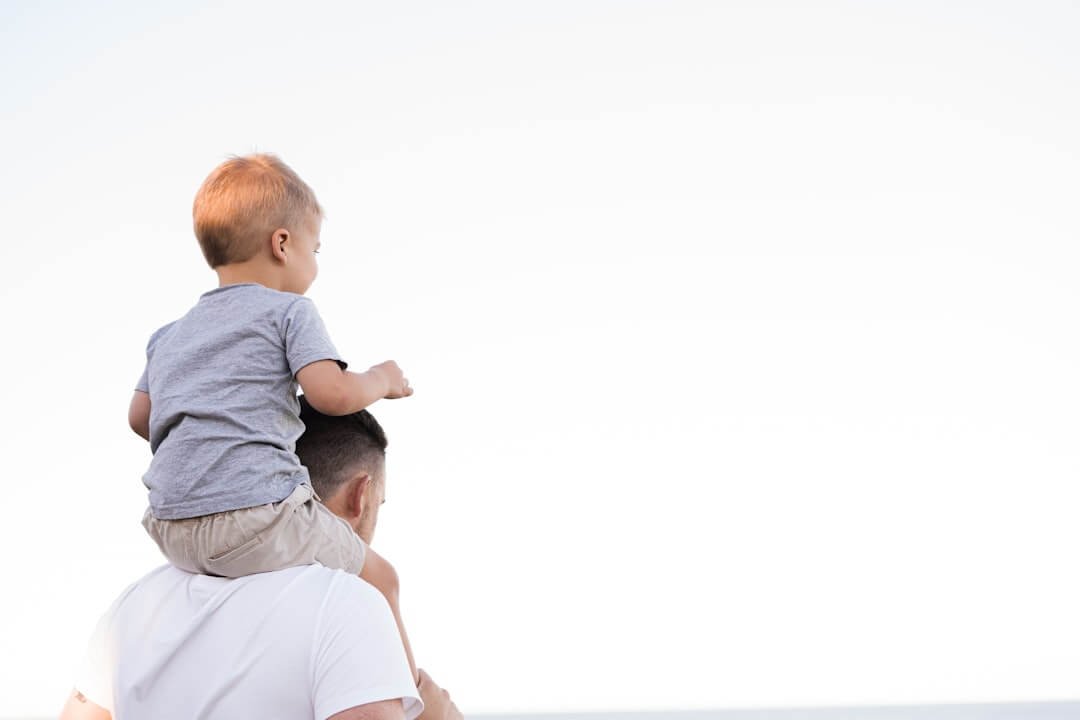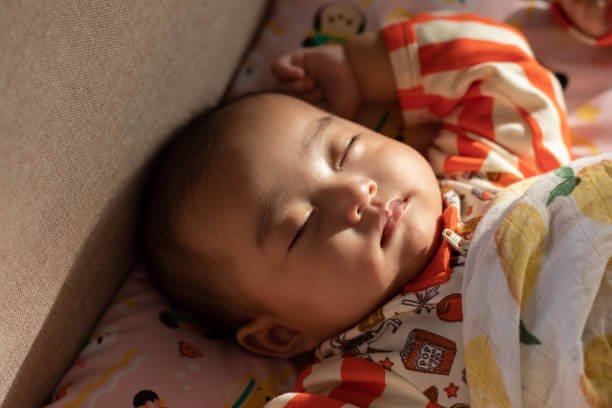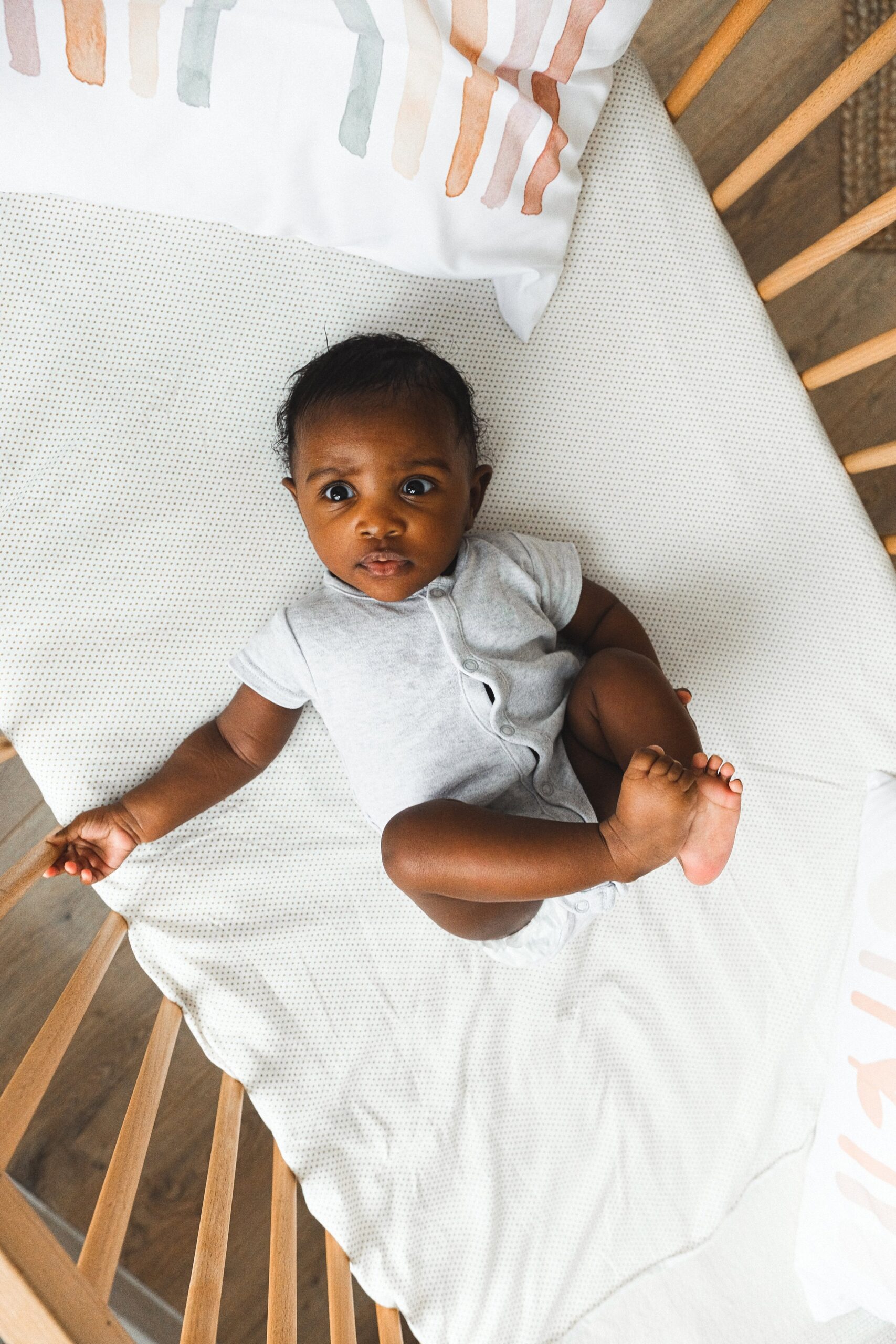I'm Rachael
Mom of 3 & Baby Sleep Expert with Big Sis Energy
& I’VE DONE ALL THE RESEARCH FOR YOU ALREADY.
Better sleep for the entire family
BROWSE COURSES
hey!
best travel crib and play yard: an honest review and comparison of popular travel cribs
July 28, 2023
in this post:

A “travel crib” or “play yard” is essentially a fold-up, packable sleep space for your baby or toddler. A travel crib — also known as a portable crib, play yard, or pack and play, allows you to provide a contained space for your baby to hang out or sleep. Some parents use a travel crib in their own homes as an alternative to a traditional bassinet or crib. Others use them as a safe spot for baby to sleep while away from home like at a babysitter or grandparent’s home. Others use travel cribs just while on vacation. Whatever you’re planning to use your play yard for, you want to be sure you’re choosing the right one for your family- and your budget. How do you know which one to pick?! In this blog post I’ll share my honest review and comparison of 6 of the most popular play yards on the market.
This post contains affiliate links, however Rachael is not partnered with any of these companies at time of publication of this post.
my criteria
While researching the most- recommended and best-reviewed travel play yard/ cribs, I had a few additional criteria to make sure they were up to my standards to recommend to the masses.
1. Safety. Firstly, deciding to room share with your baby means that you are already making an awesome safety choice! The American Academy of Pediatrics (AAP) recommended that parents and caregivers share a room with their baby for the first 6 months of life. Ideally, this arrangement will last up to 1 year. This new recommendation comes after the AAP examined research that said sharing a room with your baby can reduce the risk of sudden infant death syndrome (SIDS) by up to 50%.
The good news is that in 2021, the U.S. Consumer Product Safety Commission (CPSC) approved a new federal rule that will ensure that products marketed or intended for infant sleep will provide a safe sleep environment for babies under 5 months old and beginning in mid-2022, any product intended or marketed for infant sleep must meet a federal safety standard. These travel cribs meet safety requirements per the CPSC. You can read more about their guidelines here. If you are ever getting a crib, play yard, or bassinet second-hand, always be sure it hasn’t been recently recalled. Since I’d never recommend an unsafe product these cribs all meet appropriate safety guidelines. Just in case you decide on something else, here’s what to keep in mind. The travel crib should have:
-
a mattress that is firm and fits tightly with no gaps (never add blankets or additional padding to the travel crib- just the mattress it comes with)
-
a flat, non-inclined surface with no extra padding, bumpers or pillows
-
a sturdy bottom with a wide base
-
smooth surfaces
-
no hardware should be sticking out
2. Cost. I wanted to include a few different price points. Keep in mind that you can often find these on Facebook Marketplace but beware anytime you are buying a sleep space second-hand. Be sure to thoroughly check the crib before using it, and make sure it comes with the same parts as when it’s bought directly from the manufacturer and hasn’t been altered in any way. You can also often rent travel gear if you’re going on vacation and don’t want to invest in your own travel crib. I love using services like Babyquip as a cost-effective way to get great baby gear while traveling.
3. Compatibility with Slumber Pod. Many parents like to utilize other products for sleep while traveling such as the Slumber Pod. While I don’t think a Slumber Pod is entirely necessary, it can be a good option for families who are traveling and plan on sleeping in the same room as their baby and/or multiple other children. As long as the Slumber Pod is set up properly and has good air flow (using the included fan) and not ever used in a hot location, they can be a good option! I’ll let you know if each travel crib will fit inside the slumber pod. Personally we usually opt for travel blackout blinds instead (great blackout curtains that help with this too – use heysleepybaby for 10% off) because I would rather have my baby more easily accessible and uncovered. This is just a personal preference!
4. Ease of use. I’ll let you know how easy each crib was to set up, take down, and pack away.
5. Quality of materials. I’ll share my thoughts on the quality of each play yard and the materials used.
6. Size. I’ll give you the dimensions of each one so you can measure to be sure it will fit your space. I’ll also share which ones are the lightest, airplane friendly, etc.!
Ok, here we go. here are the 6 play yards I tested out:
-
Graco Pack-n-Play. This is the “OG” travel crib and we’ve had one since my oldest was born 6 years ago. It’s not the easiest to set up or take apart, and it’s pretty heavy and clunky. That said, it does the job and is a cult classic for a reason! You can’t go wrong with the price point either, and though there are more expensive versions with lots of attachments and bells and whistles, you really want as simple as possible when it comes to a safe sleep space for your baby.
-
Newton Travel Crib. This crib / play yard is newer to the market and made a HUGE impression! Newton is already very popular for their “breathable” mattresses and they’ve used this same technology in their travel crib. The crib is also significantly larger than the competition, and has an aesthetically pleasing design and great quality materials. The Newton also comes with an optional bassinet add-on to use in the first couple of months. Similarly to a few of the others, the Newton has the side zipper making it an ideal choice for little ones who are used to cosleeping. The Newton has plenty of space for a parent to lay with their baby or feed them to sleep. The downside of the Newton is that since it’s so spacious, it would be cumbersome to travel with by plane or public transportation. It’s a great option for home or road trips, though! Putting the Newton together isn’t too difficult though taking it back down is very tiresome.
3. Guava Family Lotus. This is definitely my top choice for those who want to do lots of airplane travel. The carrying case for the Guava is definitely more compact and has a convenient backpack design. I’m also told it fits in overhead bins on most aircraft! The Guava is also one of my favorites because of their side zipper. You can easily lay with or nurse your baby to sleep then ninja-roll away, zipping them in for safety. Just be sure to have a sound machine handy- some parents say the zipper sound wakes their baby up. Overall this travel crib is the fan favorite of the HSB community with lots of parents writing in about how much they love it!
4. Baby Bjorn Travel Crib. The Baby Bjorn is a beautiful travel crib with very soft, high quality materials. It was also the easiest to assemble. The downside of this crib is that it doesn’t have the side zipper option, however if your child transfers to a crib easily this won’t be a problem for you. Similarly to the Newton and the Guava, the Baby Bjorn mattress rests on the floor, making it ideal for taller or heavier babies since there is no weight limit, plus making it harder to climb out of. I couldn’t find a trial period offered by Baby Bjorn, but you can return it per the manufacturer or supplier’s policy- I saw within 14 days on their website. Overall the Baby Bjorn is very roomy, spacious, and aesthetically pleasing. The carrying case is one of the more “boxy” of the travel cribs I tested, and wouldn’t fit easily in an overhead bin if traveling by plane. Some parents let me know that they were able to check it or pack it inside of a large suitcase for air travel.
5. Chicco Alfa Lite Travel Playyard. The Chicco travel crib is a “dupe” for the pricier Guava Lotus style. It has zipper sides and mesh material, and is surprisingly easy to assemble and to fold up. The Chicco is about half the price of the Guava, and still uses Greenguard Gold Certified materials. It’s smaller than similar options, though, which also means it’s very lightweight at just 12.5 pounds. This might be a good option for smaller babies or young toddlers who don’t need a ton of space to stretch out. The zipper makes it easier for parents to soothe baby while laying next to them or to cuddle or nurse to sleep before rolling away and zipping baby in for safety.
6. Dream on Me Travel Light Playard. The Dream on Me was the only option with removable legs that had to be clicked into place rather than folded out to assemble. This extra step made it not so easy to put together or take apart. This one seemed a bit less stable than the other options. However, for the price, it’s a good option for those who want the side zipper style travel crib. Overall this was my least favorite to assemble/ disassemble and seemed to be the least sturdy of the ones I tried. However, there are tons of 4 and 5-star reviews on Amazon, so some parents really do love it!

My Top Picks
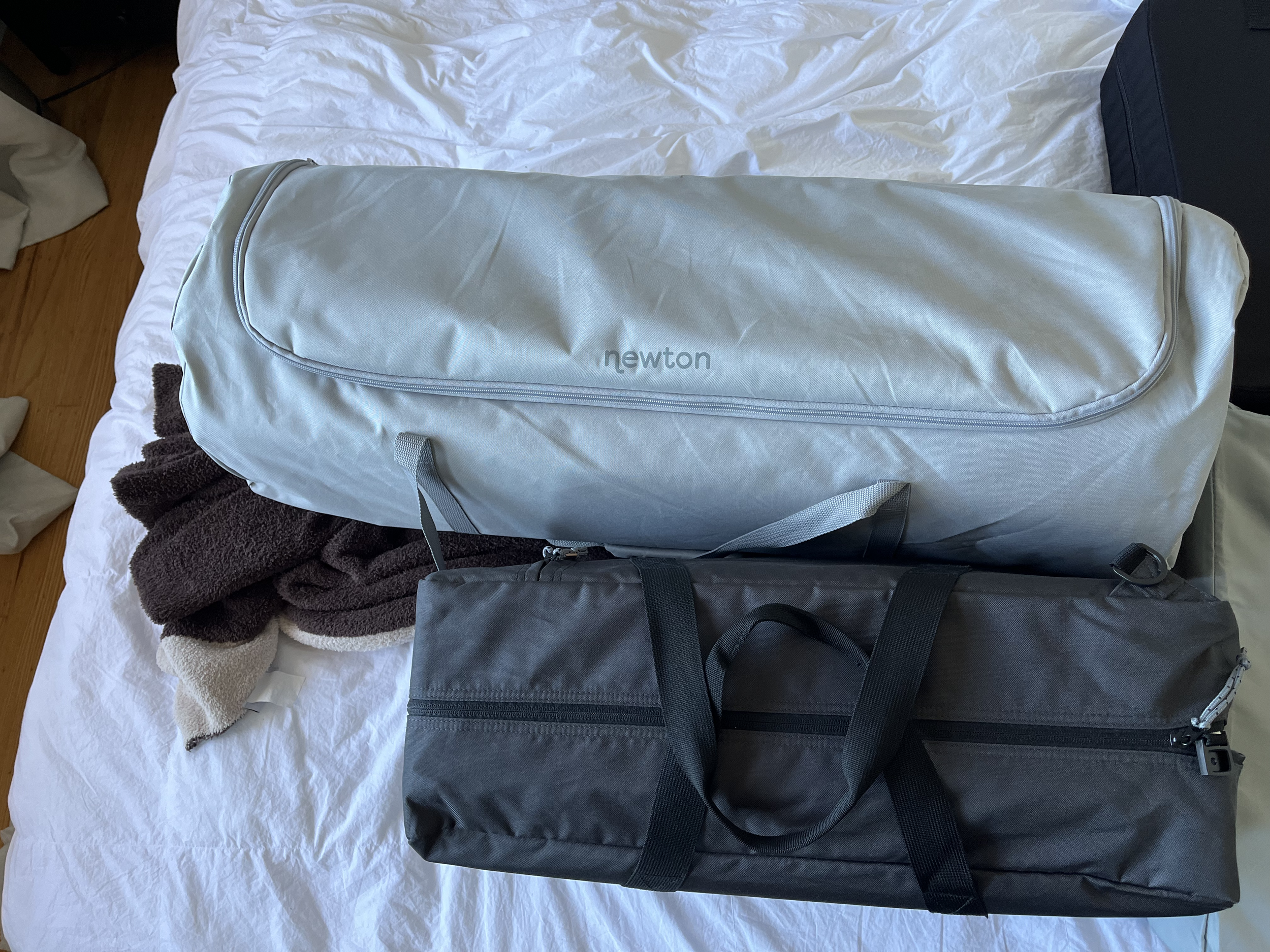
My favorite of the travel crib options is the Guava Lotus with a close second being the Newton. I love the Guava for the ease of assembly, the compact size and backpack for travel, and the side zipper. I love the Newton for the spaciousness and this would be a great option for a “floor bed” if you didn’t want to safety proof the whole room.
As a runner up option, I really love the Chicco and it’s a great price.
For a non-zip side option, the Baby Bjorn was also beautiful and spacious, with great materials and a comfortable mattress. It was also extremely easy to assemble and fold up.
safety tips: how To make sure baby is safe in their travel crib
Remember, the best travel crib is not only comfortable and convenient but also meets the highest safety standards. Here’s what to keep in mind to be sure your travel set up is as safe as possible:
-
Assembly and Disassembly: Always follow the manufacturer’s instructions carefully when setting up and folding down your travel crib. Improper assembly can lead to instability, posing a risk to your baby’s safety. Be sure the mattress fits snugly and is snapped/ buckled etc. into place as per manufacturer’s instructions.
-
Age and Weight Limits: Check the product’s specifications for the recommended age and weight limits. Travel cribs have specific weight capacities, and exceeding them can compromise the crib’s structural integrity.
-
Safe Sleep Guidelines: Adhere to safe sleep practices even when using a travel crib. Place your baby on their back to sleep, on a firm and flat mattress. Avoid adding soft bedding, pillows, or stuffed animals, as they may pose suffocation hazards.
-
Inspect for Wear and Tear: Before each use, inspect the travel crib for any signs of wear and tear. Ensure that all components, such as locks, hinges, and rails, are functioning correctly. Check to be sure there are no holes in the mesh.
-
Location and Surroundings: Place the travel crib away from curtains, blinds, cords, or any other potential hazards that a curious little one might reach. Be mindful of the crib’s positioning in the room to avoid drafts or direct sunlight.
-
Keep it Low: Lower the crib’s mattress to its lowest setting when your baby starts pulling up or standing to prevent climbing over the railings.
-
Avoid Extra Items: While travel cribs often come with add-ons such as mobiles, bassinets and changing tables, it’s essential to follow the manufacturer’s guidelines on their use. Some attachments may not be safe for unsupervised sleep.
-
Secure the Play Yard: If the travel crib has wheels, ensure that they are locked in place before putting your baby to sleep. This prevents any accidental movement.
-
Stay In Sight: Always keep an eye on your little one while they’re in the travel crib. It’s tempting to think of it as a safe haven, but supervision is still crucial.
-
Check for Recalls: Periodically check for any recalls or safety updates related to your specific travel crib model. Staying informed about potential issues can help ensure your baby’s well-being.
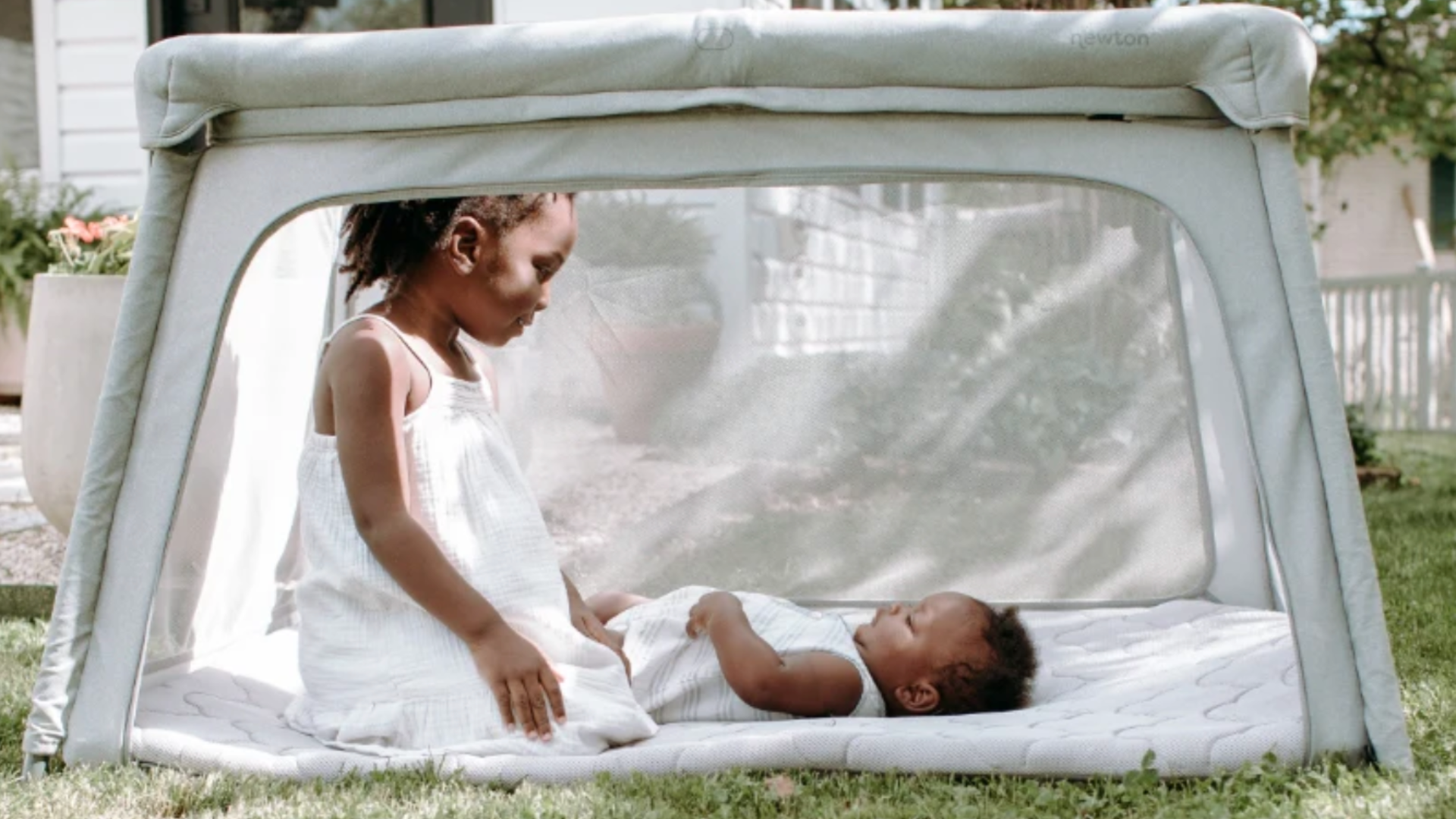
how To help your baby sleep better in their travel crib
-
before going on your trip, set up the play yard in your home so that your baby can get used to it. Set it up in their nursery or your bedroom so they can crawl around in it and maybe even try out some sleep in there in the days leading up to your departure. If you are using a crib sheet, sleep with it or wear it tucked inside your shirt for a few days so it will have a familiar scent for your baby to feel more at ease.
-
when you place baby down, keep a hand on their chest until you can feel them settle. Or, if your travel crib has the side-zip option, lay with or nurse your baby while they fall asleep, then roll away and zip them in for safety.
-
place baby down on their side, then roll them to their backs, or at an angle, butt first, then gently lower them. this can help minimize the “startle” reflex many babies struggle with as newborns.
-
utilize sleep associations and create a calm environment. dim the lights in the room an hour or two before bedtime, turn on a white noise machine, and keep things calm and quiet if possible. While traveling it’s a good idea to maintain some of the same elements of your at-home bedtime routine for consistency and familiarity.
For more tips on traveling with your baby or toddler, check out this post full of all the information you need to know, plus tips, tricks, and other product recommendations! Grab this travel freebie with checklists, tips for safe sleep while traveling, and more! For more tips on getting the best sleep you can, follow @heysleepybaby on Instagram.
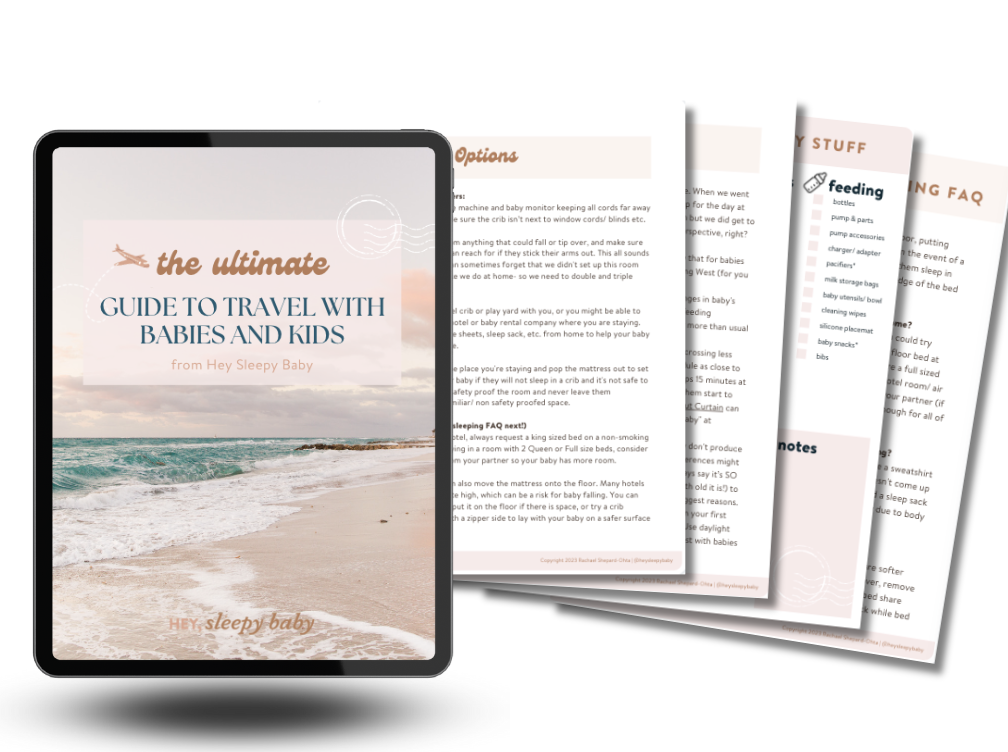
Sources
-
United States Consumer Product Safety Commission (CPSC). Bedside sleepers business guidance & small entity compliance guide.
-
American Academy of Pediatrics. How to keep your sleeping baby safe: AAP policy explained.
Was this helpful? Save it for later!
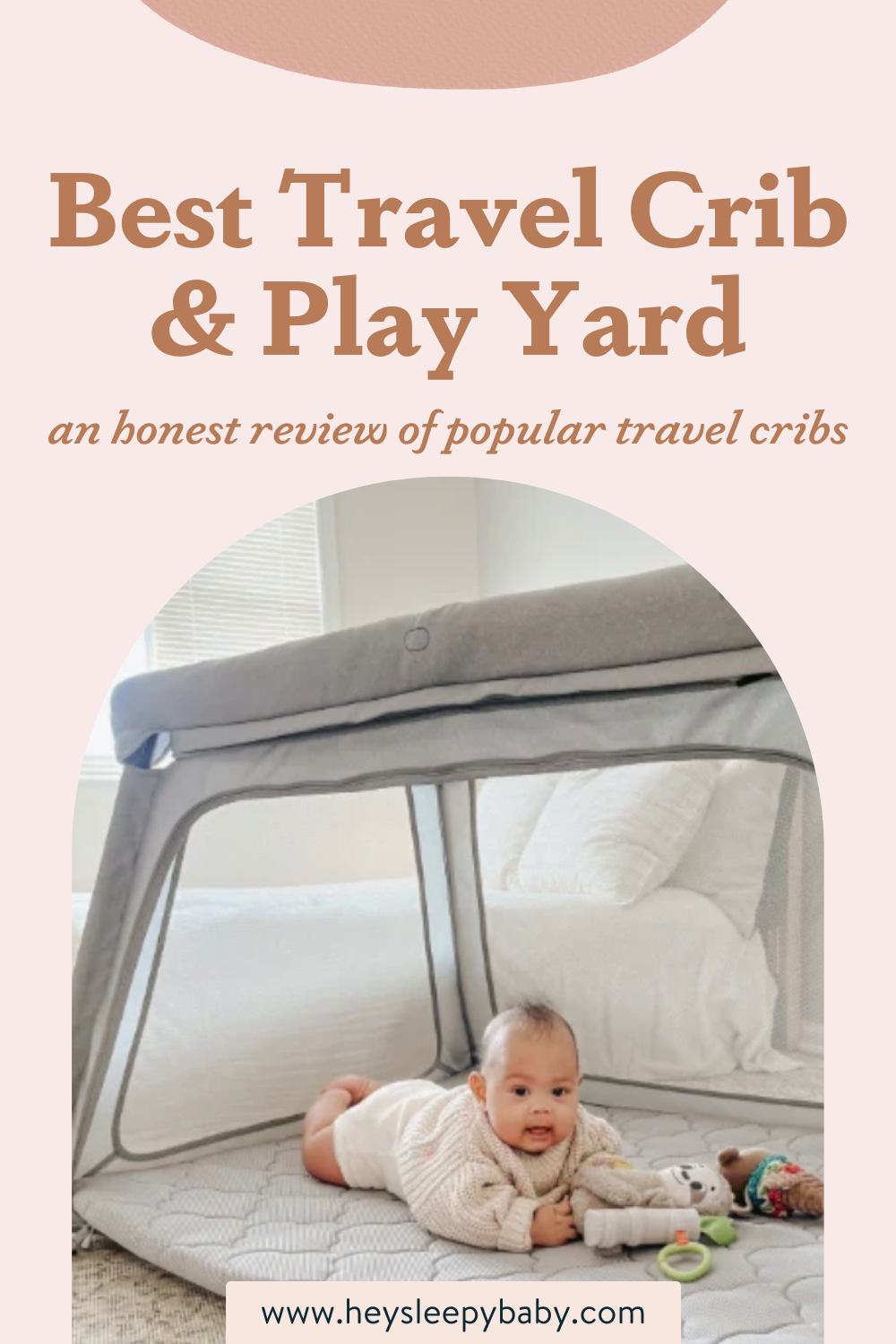
Was this helpful? Save it for later!
binge reads
We think you'll love these
You deserve to the
baby stage, not just "survive it."
And you DON'T have to sacrifice your values, ignore your instincts, or force yourself to follow a method you don't align with just to get your baby back to sleep.
I’m here to help you create a restful, sustainable sleep environment that honors both your baby’s needs AND your own (without the stress OR the guilt!) because, no, you don’t have to choose between the two.
enjoy!
BABY SLEEP COURSES →
BABY SLEEP CONSULTS →
Wish you could help your baby sleep better without resorting to sleep training? Download my FREE guide to a good night’s sleep and learn 8 simple, science-backed tips for supporting your child’s needs.
Traditional sleep training methods don’t have to be your solution to better sleep.
SLEEP TRAINING ISN’T THE ONLY WAY TO GET GOOD SLEEP
Hey, I'm Rachael and Hey, Sleepy Baby is for parents who want to get their nights back, without sleep training their babies.
NO ONE TOLD US POD
explorING the untold truths of parenting






